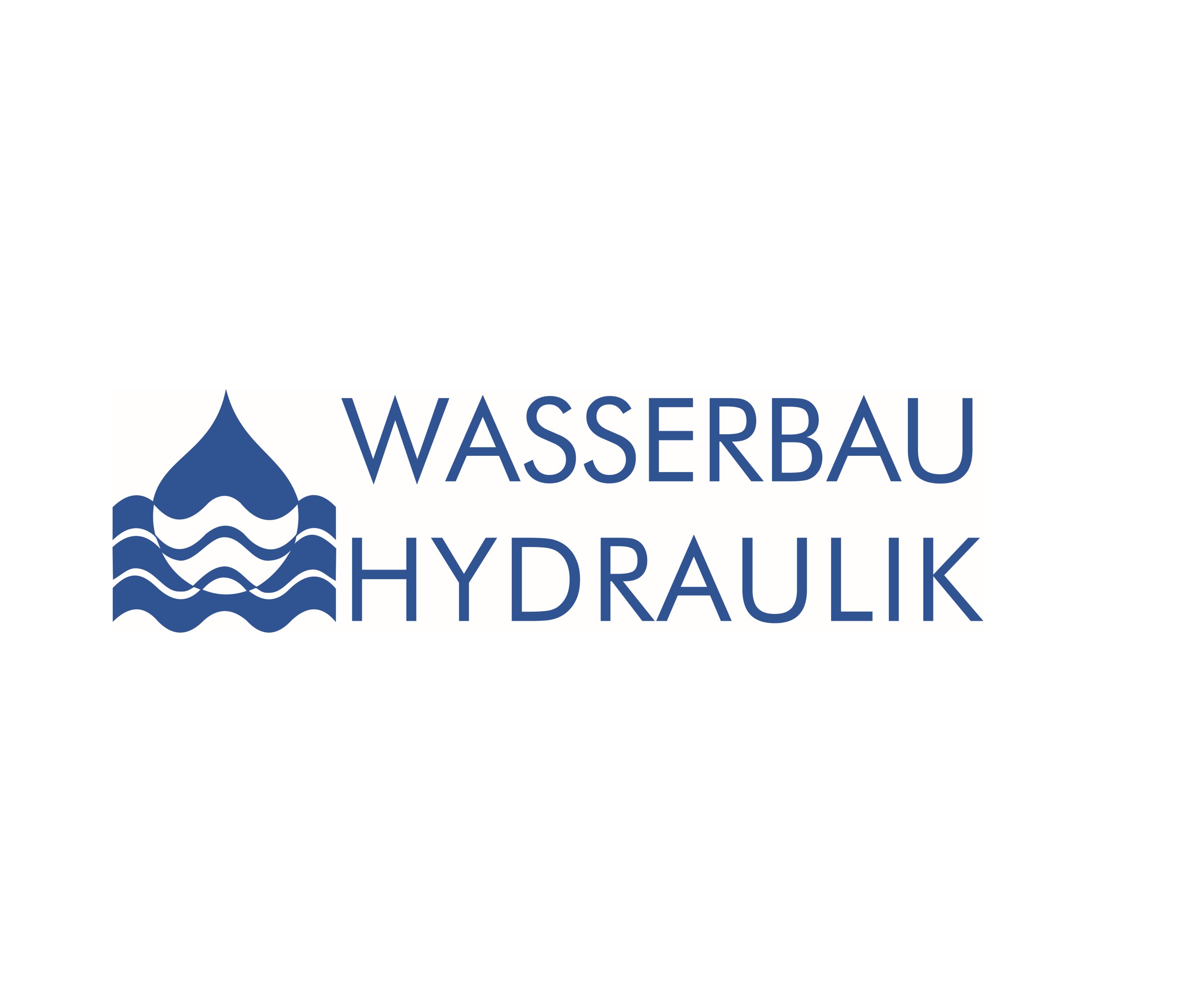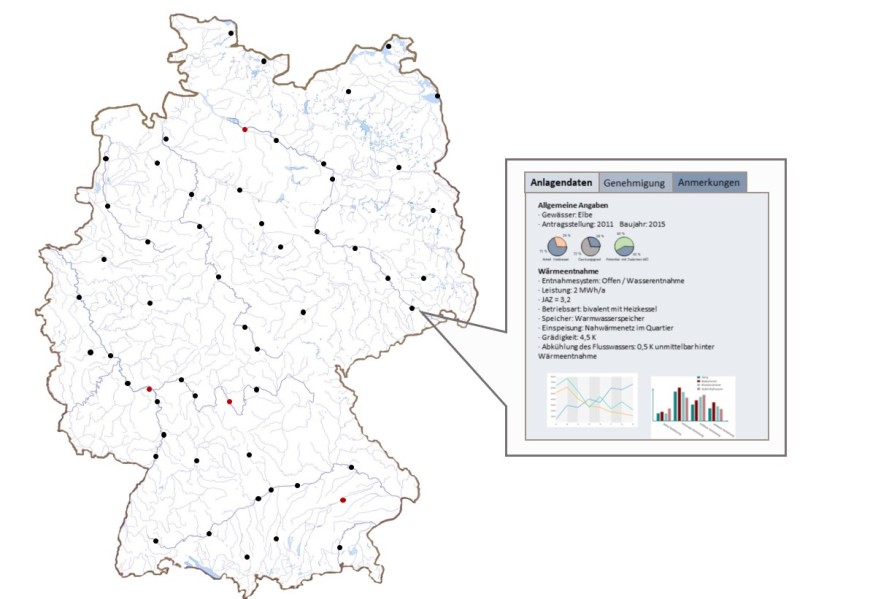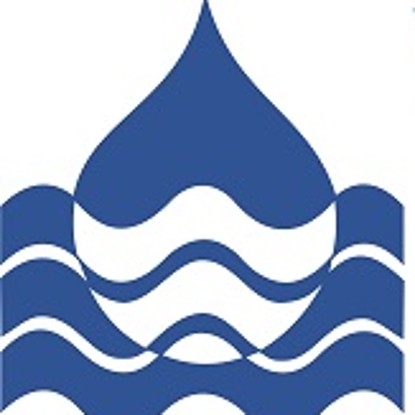Short description
The use of renewable heat can significantly contribute to achieving climate goals, combating climate change, and reducing dependence on energy sources from other countries. Heat from surface waters, as an environmental heat source, is a form of renewable heat. So-called aquathermal systems extract heat from surface water either by direct water withdrawal or by heat extraction using heat exchangers. Heat pumps raise the temperature level and ultimately transfer the heat to the end users. Currently, such aquathermal systems in Germany are approved on a decentralized basis and are rarely known to parties other than the responsible approval authority. However, the exchange of experiences and environmental approval requirements is crucial to reducing barriers to the decision-making process for aquathermal projects and promoting the thermal use of surface waters.
As part of the project, a map-based aquathermal viewer with a database will be developed and made freely accessible on the internet. The viewer will serve as an easily accessible platform for the centralized collection of aquathermal systems and their characteristic data. The project aims to achieve the following objectives:
- While approval authorities currently make site-specific, case-by-case decisions regarding local temperature changes, a comprehensive overview enables cross-site assessments of temperature disturbances affecting an entire water body, particularly in light of the growing interest in aquathermal systems. This will allow for a broader assessment of ecological impacts than is currently possible. Data- and experience-based decisions regarding permissible temperature changes in water bodies contribute to relieving ecological stress (environmental relief) and provide a means to counteract the climate-induced warming of many water bodies in a targeted manner.
- A central collection of system data and water parameters serves as a foundation for knowledge transfer, enabling learning from both best practices and worst practices and overcoming barriers to the establishment of aquathermal systems, which are partly due to uncertainties stemming from limited experience. Promoting the use of environmental heat sources contributes to the heat transition.
- Currently, the responsibility for limiting local temperature changes lies with the locally responsible approval authorities. An overview of past decisions will make future decisions by the respective authorities more transparent in the first step and, in the second step, contribute to the harmonization of approval procedures.
To this end, the viewer will capture and analyze the current inventory of aquathermal systems and present them geospatially. The ongoing central, nationwide collection of additional systems (and their data) will be implemented in the form of low-threshold interactive input options for the users of the viewer.
Project processing
- Jessika Gappisch, M.Sc
- Prof. Dr.-Ing. habil. Boris Lehmann
- Jacob Software Development










